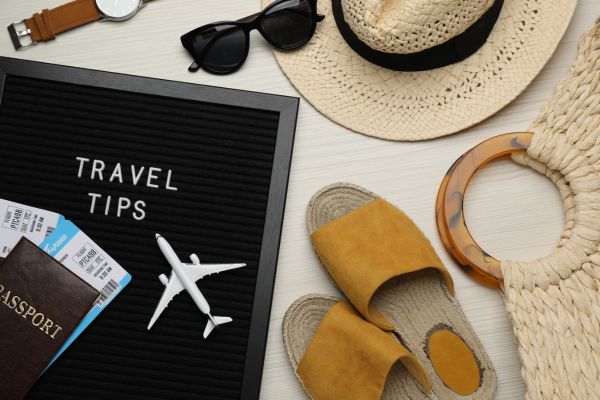Let’s be real for a second—booking flights is one of those necessary evils of travel that either makes you feel like a budgeting genius or completely ripped off. And if you’ve ever clicked around for hours trying to find the “best flight booking websites” only to end up back at square one, you’re not alone. It’s a jungle out there.
But here’s the thing—some sites actually do make the process easier, cheaper, and way less stressful. The key is knowing where to look and how to use them right. So, if you’re tired of feeling like you just got scammed by your own browser history (yep, flight prices can spike based on your searches), you’re in the right place. I’ve been through it, and I’ve got you covered.
Why Choosing the Right Flight Booking Website Matters
It’s not just about price, although—let’s be honest—that’s usually what makes or breaks the decision. The best flight booking websites combine ease of use, flexible options, low prices, and that one feature we all secretly love: filters. Tons of ’em. Want to fly on a Tuesday at 10 p.m. and avoid layovers longer than three hours? The right site can make that happen without you pulling your hair out.
But there’s more. Some sites sneak in fees. Others won’t let you cancel unless you sell a kidney. And then there are the ones that look promising until you realize they’re showing you flights from 2019. Yeah, no thanks.
So let’s dig into what actually makes a flight booking site worth your time.
User Experience is Everything
If a site makes you feel like you need a PhD to search for a roundtrip ticket, walk away. The best flight booking websites keep things intuitive. Think clean layout, minimal ads, and filters that help—not confuse—you.
Take Google Flights, for instance. It’s not flashy, but that’s the beauty of it. You plug in your dates and boom—flights appear instantly. Want to compare dates? Drag the calendar slider. Need to avoid certain airlines? Click, click, done. Simple.
Then there’s Skyscanner, which somehow makes searching for international deals feel like scrolling through Instagram. The layout is easy, the map view is addicting, and the “Cheapest Month” feature? A total game-changer for flexible travelers.
Price Transparency (No More Gotchas)
You know that moment when you think you’ve found a $200 flight, but by checkout it’s magically ballooned to $350? Yeah, we’ve all been there. The best flight booking websites don’t play those games.
Sites like Momondo and Kayak tend to show prices with taxes upfront, and they’ll often include baggage fees or let you know what you’re getting. No hidden “surprise” fees when you’re already emotionally attached to that flight.
And while we’re on it, avoid the sites that redirect you to shady third-party vendors with zero customer service. If a website looks like it was built during the MySpace era, it’s probably best to steer clear.
Unique Features That Actually Help
Let’s talk perks. The top flight booking websites go beyond the basics.
Hopper, for example, predicts when prices will drop—or rise—and tells you whether to wait or book now. It’s like having a psychic friend who only talks about airfare. Not always 100% accurate, but helpful enough to keep around.
Google Flights also lets you track specific routes. Set up alerts and bam—you get an email if prices dip. It’s like passive shopping, which is exactly the kind of lazy we can all get behind.
Oh, and Kiwi.com? It offers a “nomad” feature where you plug in multiple destinations and it finds the cheapest combo for you. For digital nomads or long-term travelers, it’s pure magic.
Flexibility is Key
Plans change. Flights get canceled. Life happens. So why not use a platform that gives you a little breathing room?
The best flight booking websites offer some sort of flexible booking or clear refund policy. Expedia and Booking.com (yep, they do flights too) tend to lean into this. Some tickets are refundable, others allow free changes. Always read the fine print—but still, having that option helps.
And let’s not forget about filters for flexible dates. Whether you’re flying out a day earlier or returning a day later, seeing how a slight change saves you $100? That’s the kind of intel we need.
Customer Support Actually Matters
Nobody thinks about this until things go wrong. Flight gets canceled. Wrong ticket name. Baggage doesn’t get added. That’s when customer support suddenly becomes your best friend—or worst nightmare.
That’s why some of the best flight booking websites aren’t always the cheapest. Priceline, for example, is known for having better-than-average support. And Booking.com usually helps mediate issues when airlines won’t budge.
Bottom line? If a deal seems too good to be true and the site has terrible reviews about customer service, it’s probably not worth the risk.
So, Which Ones Are Actually the Best?
Let’s wrap this up with some real talk. The best flight booking websites really depend on your priorities. Want the lowest fare and you’re flexible? Skyscanner or Momondo. Need accurate predictions and price tracking? Hopper or Google Flights. Prefer solid customer service? Go with Priceline or Booking.com.
No single site is perfect. Honestly, your best bet is to check two or three before booking. Compare results, look at the fine print, and always double-check the final price before pulling out your card.
And here’s a pro tip—sometimes the best deal isn’t on a booking site at all. Use these platforms to find the flight you want, then head over to the airline’s official website and see if it’s cheaper or comes with better perks. Sometimes it is.
Final Thoughts: Booking Smarter, Not Harder
Let’s face it, booking flights isn’t always fun—but it doesn’t have to be a headache either. With the best flight booking websites, you can actually take back control, find legit deals, and avoid those last-minute booking regrets.
Whether you’re chasing waterfalls in Bali or flying home for the holidays, choosing the right site makes all the difference. Don’t settle for clunky platforms or shady prices. There are tools out there designed to work for you—not against you.
So next time you’re planning a trip, remember this: good planning doesn’t have to mean overplanning. Just use the right tools, stay flexible, and travel smart.
Happy flying—and may your layovers be short and your seats always have a window.



